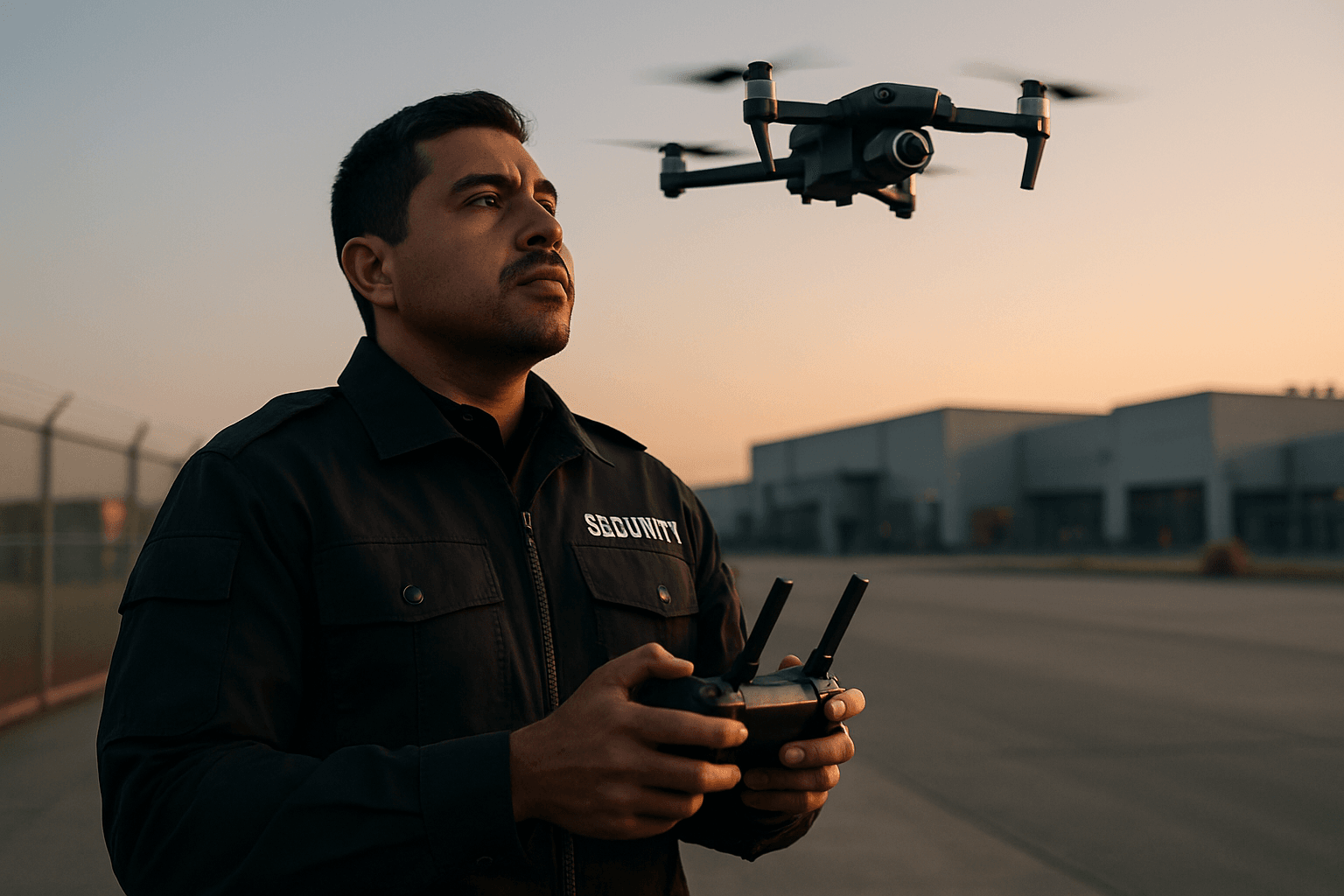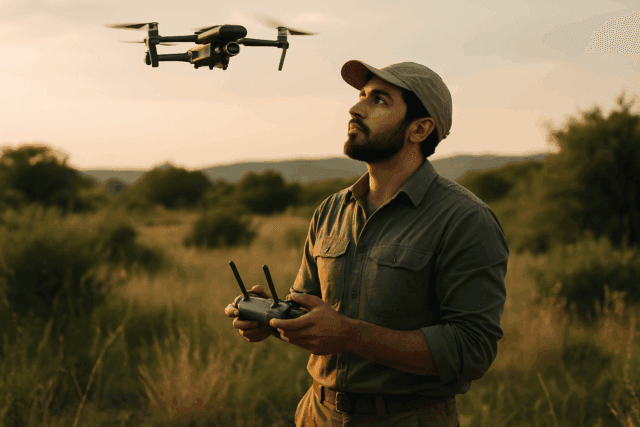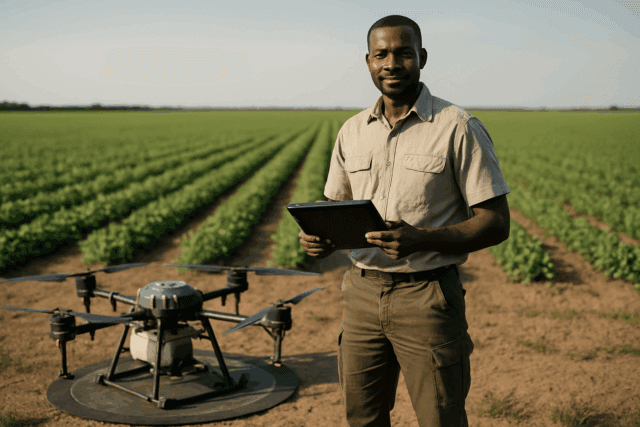In an increasingly complex security landscape, traditional surveillance methods often fall short in covering vast terrains or providing rapid response to evolving threats. Unmanned Aerial Vehicles (UAVs), commonly known as drones, have emerged as transformative tools, revolutionizing how organizations approach site surveillance, perimeter protection, and emergency response. Integrating drones into existing security frameworks offers unparalleled benefits, from enhanced situational awareness to significant cost efficiencies, fundamentally redefining modern security protocols.
The Evolving Role of Drones in Modern Security and Surveillance
Drones have transcended their initial military applications to become indispensable assets across diverse security sectors. Their ability to operate autonomously or be remotely piloted, combined with advanced sensor technologies, allows them to perform functions that would be challenging, costly, or dangerous for human personnel.
Key Drone Applications in Surveillance and Security
- Perimeter Patrols and Area Monitoring: Drones can patrol vast areas, industrial facilities, critical infrastructure, and remote locations more efficiently and rapidly than traditional ground patrols. They provide continuous, uninterrupted surveillance, detecting intrusions or suspicious activity with high efficiency.
- Real-time Situational Awareness: Equipped with high-resolution, thermal, and night vision cameras, drones stream live video feeds, offering a bird’s-eye view and eliminating blind spots. This real-time data is crucial for rapid assessment and informed decision-making during incidents.
- Rapid Incident Response: In emergencies, drones can be dispatched instantly to investigate alarms, reaching the scene much faster than human guards or vehicles. This accelerated response time provides critical situational awareness, allowing security teams to make quick, informed decisions.
- Hazardous Area Inspection: Drones can safely inspect dangerous or hard-to-reach locations, such as high-voltage areas or unstable structures, without putting human personnel at risk.
- Crowd Monitoring and Event Security: For large public gatherings, drones offer comprehensive aerial coverage, aiding in crowd management, identifying potential threats, and tracking movements.
- Search and Rescue Operations: Thermal imaging and high-resolution cameras on drones enable rapid coverage of large areas, assisting in locating missing persons or survivors in remote or inaccessible terrains.
- Border Security: Drones provide real-time reconnaissance, target acquisition, and tracking of personnel movements and illegal activities, especially in challenging terrains.
Benefits of Integrating Drones into Existing Security Systems
The integration of drones doesn’t replace existing security infrastructure but rather complements and significantly enhances it, creating a more robust and responsive defense-in-depth approach.
Enhanced Operational Efficiency and Coverage
Drones significantly lower the barriers to effective surveillance, especially across expansive and challenging terrains. They reduce the need for extensive manpower and expensive fixed infrastructure by providing broad aerial coverage. Autonomous patrolling, enabled by programmed flight paths, allows drones to tirelessly monitor designated areas, surpassing human limitations.
Cost-Effectiveness
Deploying drones can be more cost-effective than traditional security setups. They reduce the need for large ground teams and expensive fixed camera installations in remote areas. Drone security patrols can monitor vast areas and provide high-quality footage, potentially meaning fewer on-site security officers are needed.
Improved Safety for Personnel
Drones allow security teams to monitor risky or hard-to-reach areas remotely, keeping personnel out of harm’s way during emergencies, natural disasters, or suspect tracking.
Data Integration with Centralized Security Systems
Drone footage and alerts can be streamed directly into a centralized security management system, such as Video Management Systems (VMS) and Security Information and Event Management (SIEM) platforms. This integration facilitates:
- Faster decision-making through real-time aerial views.
- Automated alert triggers based on drone detections.
- Cross-platform coordination between cameras, sensors, and security personnel.
The Role of AI and Machine Learning in Drone Security
Artificial Intelligence (AI) and Machine Learning (ML) are pivotal in transforming drones from mere flying cameras into intelligent, autonomous security agents.
Advanced Threat Detection and Analysis
AI-powered drones, equipped with advanced algorithms and computer vision, excel in real-time monitoring and threat detection. They can:
- Automatically identify objects that pose threats, perimeter intrusions, or anomalous behavior.
- Analyze patterns and predict potential threats by analyzing movement patterns.
- Differentiate between normal and unusual movements, alerting to possible threats.
- Be configured to initiate specific actions in real-time if dangerous objects or weapons are detected.
Autonomous Operations
Autonomy is a key benefit of AI-integrated drones. Human operators are prone to fatigue and errors, but autonomous UAV security systems can be programmed to operate reliably and continuously. Features like automatic obstacle detection, collision avoidance, and precision landing expand their use cases.
Facial Recognition and Object Tracking
While raising privacy concerns, advanced AI can enable drones to identify targets based on image characteristics or coordinates, automatically track them, and offer HD live streaming.
Challenges and Considerations for Drone Integration
Despite the significant advantages, integrating drones into existing security frameworks presents several challenges that must be addressed for successful deployment.
Regulatory and Legal Landscape
The regulatory landscape for drones is still evolving and varies significantly by region. Key considerations include:
- Airspace Regulations: Compliance with federal (e.g., FAA in the U.S. with Part 107 rules), state, and local regulations regarding flight zones, altitude limits, and operating procedures is crucial.
- Privacy Concerns: Drones can inadvertently or deliberately capture images and data of individuals in private settings, leading to privacy intrusions and public discomfort. Clear policies for data collection, storage, retention, and sharing are essential.
- Ethical Implications: The use of drones for surveillance raises ethical questions about continuous monitoring and potential biases in AI systems.
Cybersecurity Risks
Drones are susceptible to various cybersecurity threats, especially when integrated into broader networks. Risks include:
- AI Manipulation: Hackers could tamper with AI’s decision-making processes, leading to errors or malfunctions.
- Data Breaches: Sensitive information processed or transmitted by drones could be accessed without authorization.
- Navigation Vulnerabilities: Exploiting flaws in autonomous navigation systems can compromise drone operations.
- Jamming and DoS Attacks: Drone communication can be prone to jamming and Denial-of-Service attacks.
Technical Limitations and Infrastructure
While rapidly advancing, drones still have technical limitations:
- Flight Time: Limited battery life, typically 30-40 minutes, can restrict long-term surveillance operations. However, advancements like self-docking and charging stations and automated battery swapping are mitigating this.
- Environmental Factors: Adverse weather conditions (e.g., strong winds, heavy rain, intense heat) can affect drone electronics and visibility, impacting safe operation.
- Integration Complexity: Seamless integration with diverse existing security systems (CCTV, access control, alarm panels) requires robust software and hardware solutions.
Best Practices for Seamless Drone Integration
To effectively integrate drones into security frameworks, organizations should follow a multi-faceted approach.
Develop Comprehensive Policies and Procedures
- Clear Operating Guidelines: Establish clear protocols for drone deployment, mission planning, and emergency procedures, including contingency plans for communication loss or GPS failure.
- Data Management: Implement strict policies for data collection, storage, retention, and sharing, ensuring compliance with privacy laws and minimizing data interception risks through end-to-end encryption.
- Operator Training and Certification: Ensure drone operators are properly certified (e.g., FAA Part 107 in the U.S.) and trained on all legal, ethical, and technical aspects of drone operation, as well as specific security protocols.
Implement Robust Cybersecurity Measures
- Secure Communication Protocols: Use highly complicated and frequently changed encryption keys for drone communications.
- AI-powered Threat Detection: Employ AI to identify real-time risks, differentiate between legitimate and unauthorized UAVs, and automate countermeasures.
- Regular Software Updates and Audits: Continuously update drone software and firmware and conduct routine security audits to address vulnerabilities.
- Access Controls: Implement role-based access controls to restrict sensitive information.
Strategic System Integration
- Centralized Management Platforms: Utilize platforms that allow for mission planning, flight monitoring, real-time video processing, and seamless connection with existing security infrastructure like VMS, alarm panels, and access control systems.
- Multi-layered Detection Systems: Combine various sensor technologies such as radar, radio frequency (RF) sensors, acoustic sensors, and electro-optical imaging for comprehensive drone detection and tracking.
- Scalability: Choose systems that can easily scale to cover properties of all sizes and adapt to evolving security needs.
The Future of Drone Security Technologies
The future of drone security is marked by continuous innovation, with several emerging trends poised to further enhance their capabilities.
Advanced Autonomy and AI Integration
Future drones will see even greater autonomy, with AI and machine learning enabling predictive threat analysis and more sophisticated decision-making. Deep learning algorithms will continue to improve drone detection accuracy, real-time processing, and environmental adaptability.
Counter-Drone Measures (C-UAS)
As drone usage expands, so will the anti-drone market, focusing on multi-layered defense systems that combine detection, identification, and neutralization capabilities. Autonomous Counter-UAS systems, directed energy weapons, and cloud-enabled threat intelligence are key trends.
Swarm Technology
The integration of drone swarms and AI-powered drones will enable coordinated aerial operations, presenting new challenges and opportunities for defense and security.
Enhanced Connectivity
The widespread integration of 5G will enable real-time data transmission with lower latency, opening new frontiers for drone applications in emergency response and traffic management.
Integration with IoT and Smart City Infrastructure
Drones will increasingly integrate with broader smart security systems, including IoT sensors and AI analytical platforms, to create a more interconnected and responsive security ecosystem.
Conclusion
Drone integration into existing security frameworks is not merely an enhancement but a fundamental shift in how organizations approach surveillance and protection. By offering enhanced situational awareness, rapid response capabilities, and cost efficiencies, UAVs are redefining security standards. While challenges related to regulation, privacy, and cybersecurity remain, a strategic approach embracing best practices, advanced AI, and robust system integration will pave the way for a safer, more secure future, where drones play an increasingly critical role in safeguarding assets, infrastructure, and personnel.





